
Halictidae is the second-largest family of bees with nearly 4,500 species. They are commonly called sweat bees, as they are often attracted to perspiration. Halictid species are an extremely diverse group that can vary greatly in appearance. These bees occur all over the world and are found on every continent except Antarctica. Usually dark-colored and often metallic, halictids are found in various sizes, colors and patterns. Several species are all or partly green and a few are red, purple, or blue. A number of them have yellow markings, especially the males, which commonly have yellow faces, a pattern widespread among the various families of bees. The family is one of many with short tongues and is best distinguished by the arcuate basal vein found on the wing. Females in this family tend to be larger than the males. They are the group for which the term 'eusocial' was first coined by entomologist, Suzanne Batra.
Sphecodosoma dicksoni is a species of sweat bee in the family Halictidae. It is found in Central America and North America.
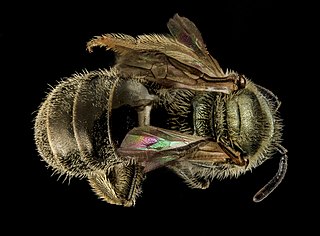
Lasioglossum versatum is a species of sweat bee in the family Halictidae. A common name is Experienced sweat bee.
Lasioglossum albipenne, the white-winged metallic-sweat bee, is a species of sweat bee in the family Halictidae.

Xeralictus timberlakei is a species of sweat bee in the family Halictidae. It is found in North America.
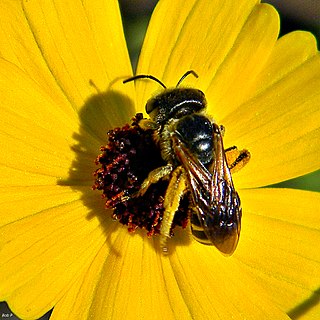
Halictus poeyi, or Poey's furrow bee, is a species of sweat bee in the family Halictidae. It is found in the southeastern United States, and is morphologically indistinguishable from Halictus ligatus.
Micralictoides ruficaudus is a species of sweat bee in the family Halictidae. It is found in North America.
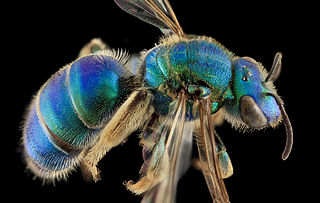
Augochloropsis sumptuosa is a species of sweat bee in the family Halictidae.

Augochloropsis is a genus of brilliant metallic, often blue-green, sweat bees in the family Halictidae. There are at least 140 described species in Augochloropsis.
Sphecodes johnsonii is a species of sweat bee in the family Halictidae.
Agapostemon obliquus is a species of sweat bee in the family Halictidae.
Conanthalictus macrops is a species of sweat bee in the family Halictidae. It is found in North America.

Dufourea maura is a species of sweat bee in the family Halictidae. It is found in North America.
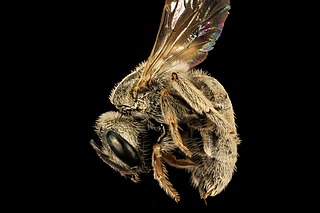
Halictus tectus is a species of sweat bee in the family Halictidae.
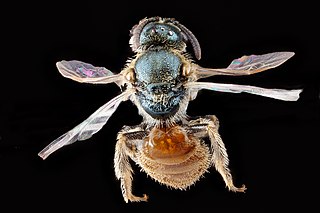
Lasioglossum pictum is a species of sweat bee in the family Halictidae.
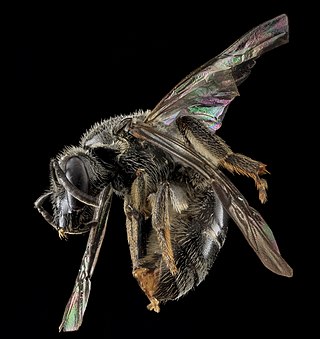
Lasioglossum pectinatum is a species of sweat bee in the family Halictidae.
Protodufourea eickworti is a species of sweat bee in the family Halictidae. It is found in North America.
Protodufourea is a genus of sweat bees in the family Halictidae. There are about five described species in Protodufourea.
Lasioglossum mellipes is a species of sweat bee in the family Halictidae.

Augochloropsis anonyma is a species of sweat bee in the family Halictidae.










